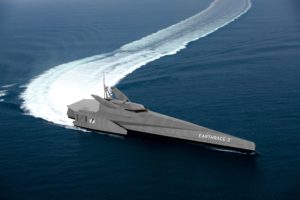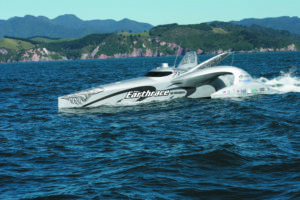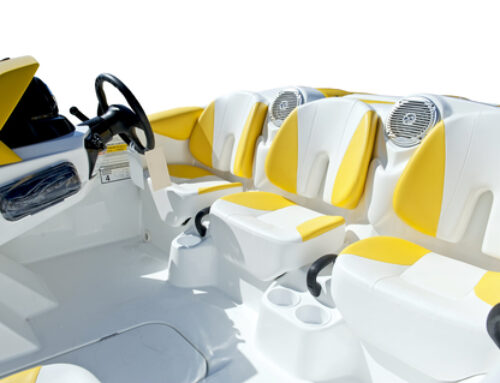Earthrace designs unveiled

Photo: Earthrace Conservation
The Earthrace Conservation Organization has unveiled concept designs of a new 60m Trimaran to be used for conservation missions around the world. The vessel, designed by Auckland Naval Architects LOMOcean Design, is based on the original Earthrace that still holds the world speed record for circling the globe.
Earthrace CEO Captain Pete Bethune says the new vessel is pivotal for the team to increase its work in addressing illegal fishing. “We’ve worked in a number of countries targeting illegal fishing by foreign vessels, but the real work in open waters has been limited because we lacked our own long-range vessel. So this new vessel will be used in blue-water patrols, mostly assisting local units to catch poachers.”
Since 2011 Earthrace has been assisting countries with conservation missions, many of which were covered in the television series, The Operatives. In this, Bethune and a team of former military personnel assist countries with pressing conservation issues. The team works with local units in catching criminals involved in environmental crime.

Photo: Earthrace Conservation
The new vessel will serve as a base of operations for the team and will allow them to run missions almost anywhere on earth. It will hold most of the existing assets, including the Sealegs, which gives the team a high-speed pursuit option. Bethune says the vessel will have a range of about 10,000 nautical miles, and a top speed somewhere between 20 and 25 knots. It will accommodate a crew of 26 and can run continuously for up 28 days. There are also plans to film a new television show.
Earthrace will be launching a Kickstarter campaign to raise $50,000 to assist the team in completing the designs. The original Earthrace vessel was launched in 2006 and was fueled on biodiesel made from waste cooking oils. In 2008 the vessel set a new world speed record for circling the globe of 60 days, 23 hours and 9 minutes. In 2010 the vessel was involved in collision with the Japanese whaling vessel.
 TEXTILES.ORG
TEXTILES.ORG 





